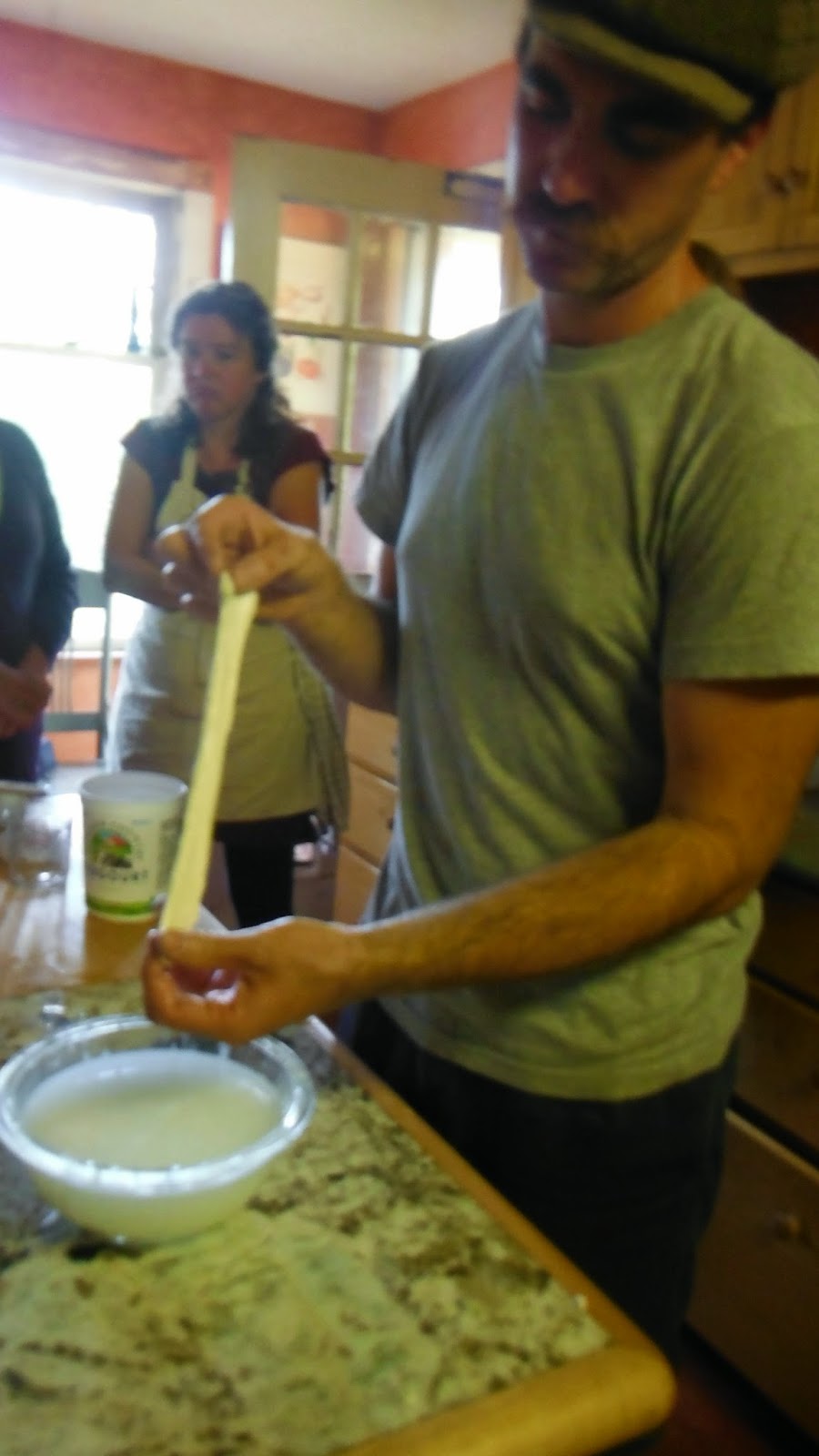We learned how to make three styles of cheeses. The first and easiest is straining dairy products through a cheesecloth to produce soft cheeses like chevre, labane, and cream cheese. The second method is the one I was familiar with which is making acid cheeses like paneer, using vinegar or lemon juice to curdle milk.
 | ||
| Making delicious, soft and spreadable cheese from yogurt. The yogurt is salted, wrapped in cheesecloth, and left to drain in a fridge overnight. The next day it is heavenly cheese. |
 |
| Curds and whey that are on their way to becoming a pressed round of cheese. |
Fresh, raw milk is the best milk to use. Regular pasteurized and processed milk from the supermarket will not do for making most cheeses, because the aging process for cheese relies on the enzymes and natural environment present in milk in its natural state.
 |
| Squeaky cheese curds! All we did was cook the curds instead of pressing them into a round. |
 |
| Our cheese teacher was growing mold for making blue cheese. |
 |
| An example of an aged round of cheese. |
Our lovely workshop teacher, David! Here he is with his bushy moustache, stretching the mozzarella. He was an amazing teacher and really knew his stuff.
His website is full of recipes and more information
Thanks for reading.
I look forward to posting more as the days grow longer and I have more time for quilting and crafting.











